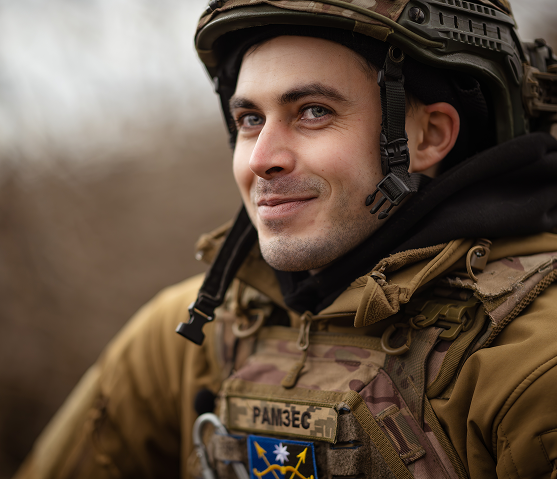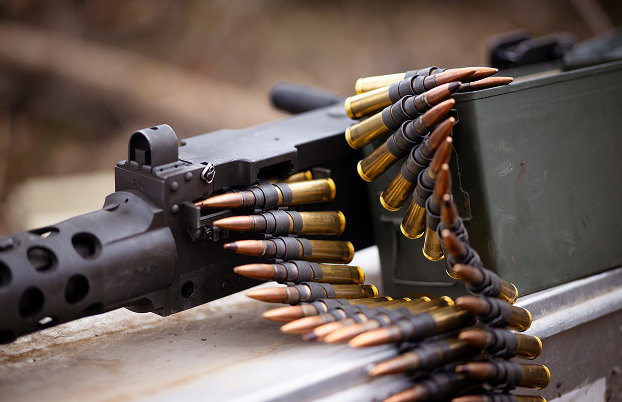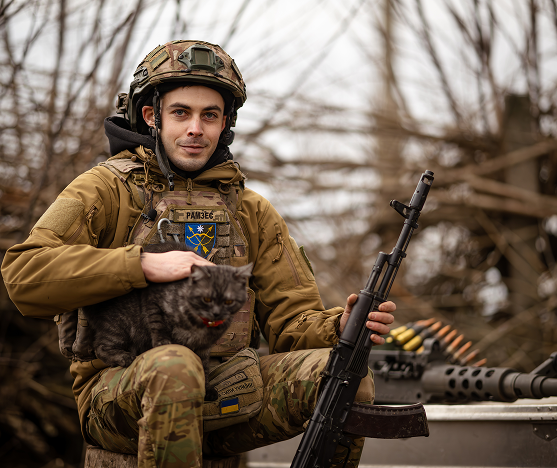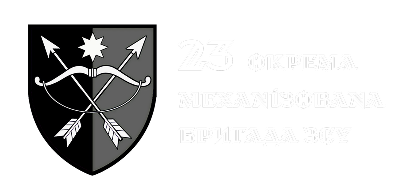
RAMSES
The commander of the machine gun platoon of the 23rd Separate Mechanized Brigade, with the callsign “Ramses,” was born in the village of Polkova Mykytivka in the Kharkiv region. He lived a normal life, working in electric and gas welding, until the full-scale invasion occurred. From the very first days, Ramses joined the territorial defense, and later was assigned to the Territorial Recruitment and Training Center of Kharkiv region. During the counteroffensive in Kharkiv, his unit was returned to his home district, and after its disbandment, he joined the ranks of the 23rd Separate Mechanized Brigade of the Ukrainian Ground Forces.
In the brigade, the hero has served since its very formation. Initially, he joined the infantry and served as a combat vehicle commander, but over time, after attending sergeant courses, he was promoted to machine gun platoon commander. He fought on all fronts where the brigade operated — Zaporizhzhia, Orikhiv, Ocheretyne, Chasiv Yar. Unfortunately, he was wounded: in Zaporizhzhia he was hit in the hand by a ricocheted bullet, the second time he suffered shrapnel wounds from an SPG-9 shot, and also experienced several concussions. Despite this, after a month of treatment, the soldier returned to the ranks.
Ramses chose his callsign himself, as his friends had called him “Ramzik” since his youth. He spent a year and a half in the infantry before joining the machine gun platoon as a gunner. Over time, he rose to platoon commander and has been performing his duties for almost a year. Ramses was already familiar with the BROWNING M2 machine gun when he served as a gunner in the mechanized platoon, and after completing training courses, he knows his weapon very well.
This machine gun is extremely powerful. Weighing about 70 kilograms with a 12.7 mm caliber, it can hit targets up to two kilometers away and penetrate armor, including Soviet-era armored vehicles.
However, according to Ramses, fighting the occupiers is becoming increasingly difficult. The weapon is heavy and large, requiring careful camouflage and significant physical effort to change positions quickly. The enemy is not foolish and not what he is sometimes imagined to be: they actively use drones, and this must be taken into account.


Ramses recalls that the work of the platoon was especially difficult during enemy attacks on motorcycles. Such assaults occurred suddenly, and to open fire on time, the soldiers had to act precisely and in coordination. In areas like Ocheretyne and Chasiv Yar, they often had to operate at night.
In the darkness, thermal imagers did not always allow the enemy to be spotted in time or at long distances, so drone operators were always very helpful. Upon the radio command “To the gun!”, Ramses’ machine gun platoon received instructions and engaged targets with precise guidance.
According to the hero, the situation was further complicated by the constant rotation of personnel: newcomers required time for training, which distracted Ramses from his main combat duties. But there was no choice — war was ongoing, and the commander always stayed nearby, helping them master the equipment and adapt quickly to combat conditions. Despite all difficulties, he and his platoon continue to carry out combat missions, bringing victory closer.
For Ramses, this is not just a duty, but also an understanding that every day of fighting is a contribution to future peace.


